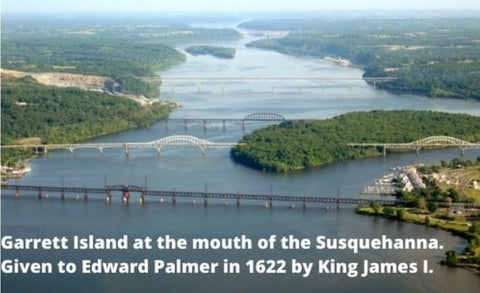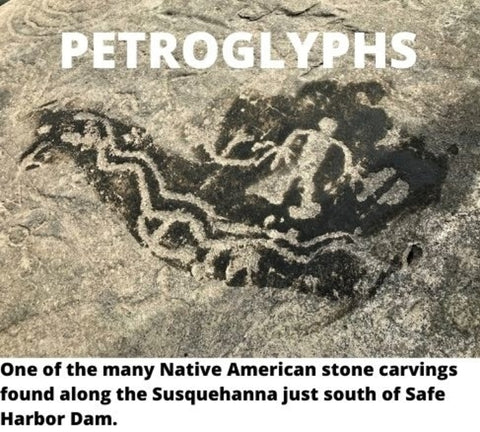Susquehanna River: A Mile-Wide History
The History of the Susquehanna River
Waterways have always played an important part in the progress of modern society. Modern as we know it, that is. But some rivers have been around longer than you can almost fathom. For instance, did you know that the 444-mile-long Susquehanna River is dated at being over 300 million years old? The Nile River, to give you some perspective, is only 30 million years old!
It’s almost hard to wrap your head around how long ago it formed. United States and Pennsylvania weren’t even a thing yet. In fact, according to LiveScience.com, “About 300 million years ago, Earth didn't have seven continents, but instead one massive supercontinent called Pangaea…”
This was the Carboniferous period, according to National Geographic, and ranged from about 300-360 million years ago. It was swampy and thick—with not a Taco Bell in sight. How old is old? It’s believed the Susquehanna River predates the Appalachian Mountains.
The Susquehanna River has quite a history! Let’s dig a little deeper to see how this river was used to help people prosper and grow communities. It’s starting point is up in Cooperstown, New York and while most of the river sits within Pennsylvania, it meanders down to Maryland, dumping off into the Chesapeake Bay in Havre de Grace.
The waterway had some challenges due to geological issues which caused rapids and obstructions. Either way, it was still a common route for canoes as Native groups moved between the Ohio Valley and Pennsylvania. Now, just because there were challenges didn’t mean that people didn’t rely on the river to help their businesses prosper and thrive. In fact, in later days they used the water to power plants that were strategically placed by the river.
You’ll find this interesting, according to the Susquehanna National Heritage Area (SNHA), “The 28,000 square mile watershed is the longest commercially unnavigable river system in North America.” This is due to the unique landforms throughout.
People didn’t give up easily when it came to navigating the waterway. In 1801, the governor of PA authorized a statute which was to help make navigating the Lower portion of the river easier. And then, later, in 1820s and 1830s they created a channel of canals to help get around the rapids.
When it comes to drinking water, we rely on the Susquehanna. Did you know that over 6 million people get their drinking water from the Susquehanna River? As for making sure the water is safe for the communities it services, there’s a commission (Susquehanna River Basin Commission – SRBC) that has an early protection system in place. You can see where they test and what they test here.
But what of the early days? The SRBC wasn’t formed until 1970. Let’s go back in time again, shall we?
The history of this famous river wouldn’t be complete without mentioning the well-known Fort Halifax which sat alongside the river. In the 1700s, Fort Halifax was in place during the French and Indian War.
Recently, they explored the area in depth, in search of new information. A team got together to learn more via an archeology dig. It took place at Fort Halifax Park. You can see some of the artifacts that were found. Nice dig! As for the fort area itself, the oldest structures (farmstead) still standing on the site date back to the early 1800s.
While the river had challenges, people still used it as they were able. At one point of the Susquehanna River, according to Maryland’s official website, “Edward Palmer, an early English adventurer, established a post on an island at the Susquehanna's mouth in 1622. His purpose was to trade goods to the Indians for valuable furs.” Though according to the Susquehanna National Heritage Area, there were tensions between multiple Native American tribes during the 17th century when it came to fur trading.
As you can see, the river was an asset to those around it, whether for trading, agricultural needs, creating power, or for transport.
And the name of the river? It was named after the Susquehannocks (aka as Conestoga’s).
Who knew the river held such a past? Here’s a neat fact for you when it comes to discovering history. One surprise came in the form of petroglyphs. Yes, petroglyphs. According to an article from ABC news, “…Historians believe the petroglyphs were carved into rocks in the river by the Shenks Ferry people, who lived in Lancaster County before the Susquehannocks…an expert on the Susquehanna petroglyphs, said they were likely created between 800 and 1,000 years ago.”
Whether you like to explore the trails, drive alongside, or enjoy hobbies such as kayaking or fishing, the Susquehanna River is an asset to the communities around it. And knowing some of the history can help you appreciate it that much more. Over 400 miles long? Dating over 300 million years old? Now that’s cool!



